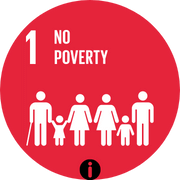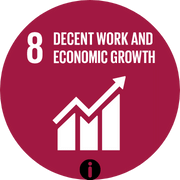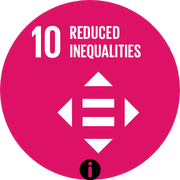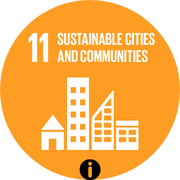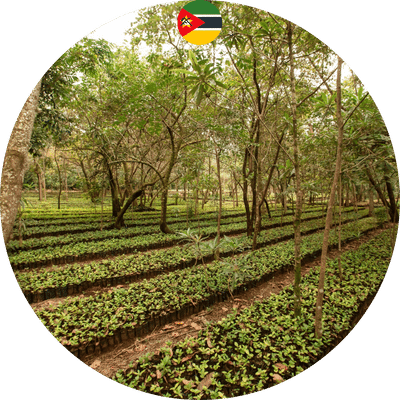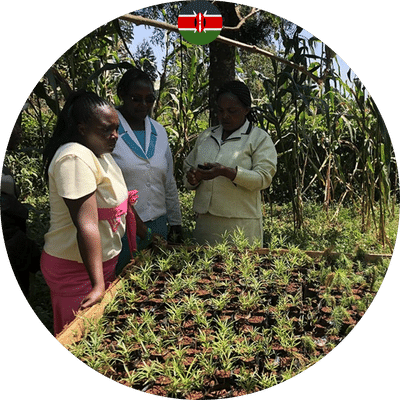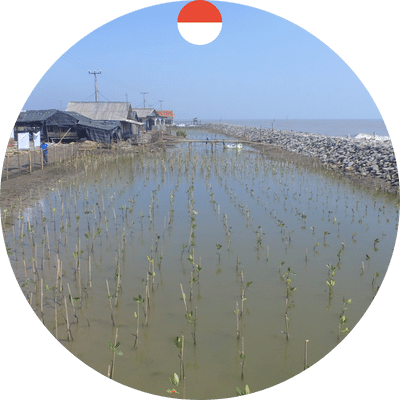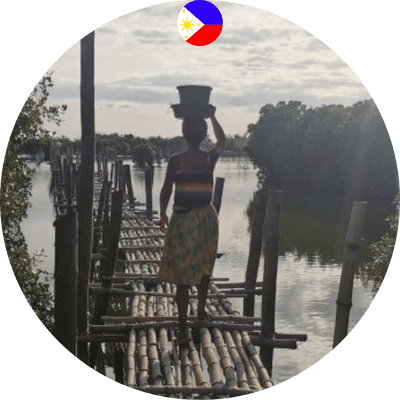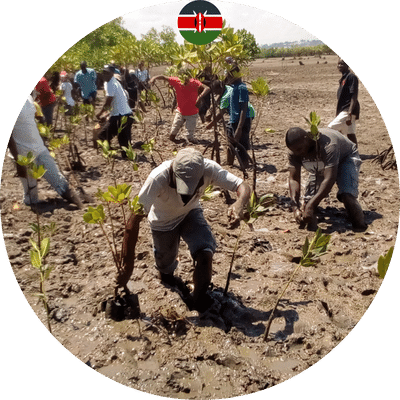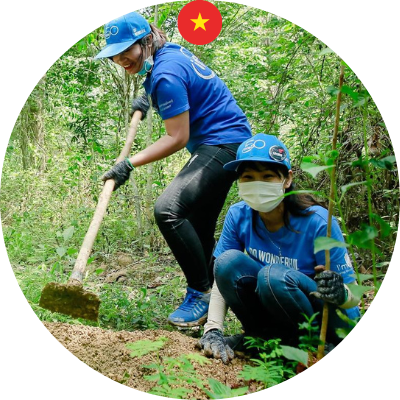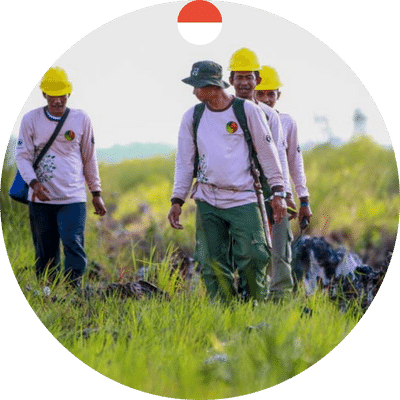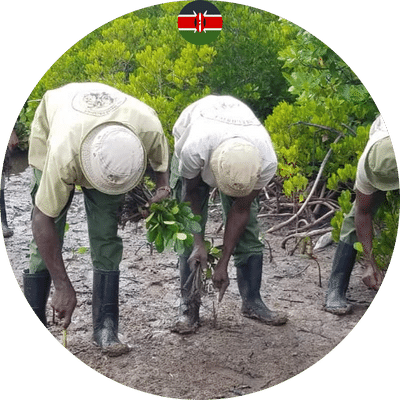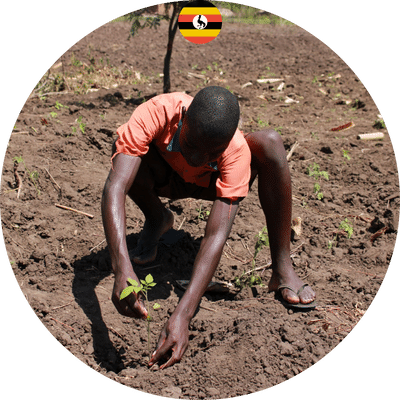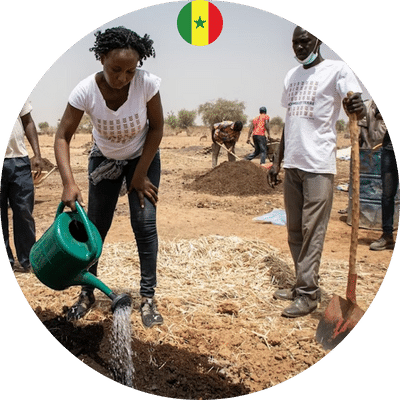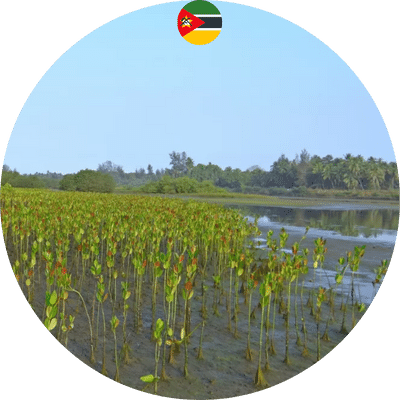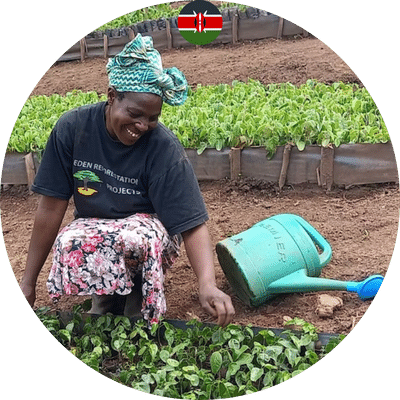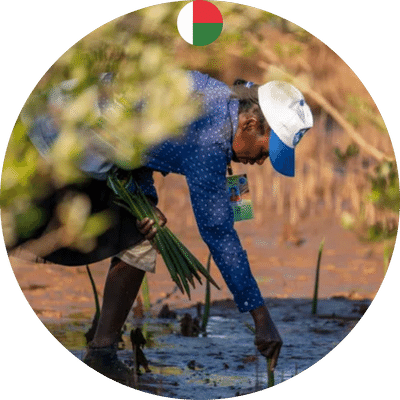Planting forest gardens in Uganda
Situation and background
On the banks of Lake Victoria, in East Africa, is the landlocked nation of Uganda with almost 46 million inhabitants. More than 20% of its population lives close to Kampala, the country’s capital. With 70% of the population under 25, Uganda’s population has grown tremendously since it was only 5 million in 1950.
The eastern region surrounding Mount Elgon has been seriously impacted by deforestation and over development. The region’s heavy population strains the soil and causes a clearcut through livestock grazing, tree chopping for firewood, and intensive harvesting of bananas and coffee. The deteriorated soil has also resulted in devastating landslides, posing a direct threat to the security of local populations.
This land degradation is the result of a direct conflict between existing damaging agricultural practices, such as monocultures (which often persist because they were historically imposed by colonial powers), and the demands of the local population and ecosystems.
Project location: Tambacounda, Senegal
Planting Partner
Trees For The Future, an American non-profit organization, is in charge of this project. Trees For The Future identifies farming families in areas of severely degraded land and employs their tried-and-true ‘Forest Garden’ program to assist farmers in establishing a protective natural barrier around their Forest Garden.

During the 4-year program, the farmers learn how to plant vegetables and fruit trees around their farms to help their families eat well and make money. Farmers can learn about conservation, make more money by selling their fruits and vegetables, and be proud of the forest garden they have made by using this method.
The project
As part of this project, 400 Forest Gardens will be made in the Mount Elgon area of Eastern Uganda. Each woodland garden is about an acre, and local farmers are helped and taught how to set up and take care of their gardens over a 4-year period.
By the end of the 4-year program, farmers will have a well-established, safe forest garden that they can use to support their families and make a vital income.
Watch this mini-documentary to learn how the Forest Garden method works and what its benefits are:
Sustainable Development Goals
When allocating our members’ funds, we’re committed to aiding in the Sustainable Development Goals set by the United Nations. Below are the SDGs acknowledged for this project.
💡 Click on the Icon to read follow the progress on each SDG.
Photos




Climate solution
Plantations of trees on degraded land
Land that has been used for things like mining and has lost its quality is a good place to plant trees and perennial biomass. This can be done in a number of ways, such as by planting a lot of native species in a small area or by putting in a single exotic species as a plantation crop.
Fast-growing, dense plots of native species show that afforestation can remove carbon while supporting biodiversity, meeting human needs for firewood, food, and medicine, and providing ecosystem services like flood and drought protection.
Read more on Drawdown.org


